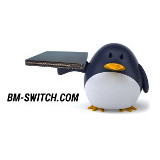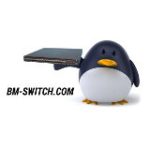Which Broadcom ASIC family is better?
Broadcom has its StrataXGS line for switching with Tomahawk and Trident families. What is the difference between them, and which one should you prefer?
To understand the difference, we need to examine two things: what Broadcom says about each family and the SW support.
Let’s look at descriptions first.
The Tomahawks
How does Broadcom describe its Tomahawks?
Tomahawk 5 – The Broadcom® BCM78900 family is a class of high-radix, high-bandwidth network switching devices…
Tomahawk 4 – The Broadcom® BCM56990 family is a class of high-radix, high-bandwidth network switching devices…
Tomahawk 3 – introduces 56G-PAM4 SerDes to the industry-leading Tomahawk line, supporting up to 12.8 Tb/s of switch chip bandwidth…
Broadcom promotes bandwidth, telemetry capabilities, and burst absorption with lower latency for RDMA applications.
New generations evolve. Starting with the Tomahawk 4, routing and tunneling capabilities are mentioned. Tomahawk 5 promises single-pass VxLAN tunneling support.
Overall, the family looks like high-bandwidth packet pushers that can balance the load and report problems but without much intelligence.
The Tridents
What can we get from the Trident product descriptions?
Trident 5 – Programmable Ethernet Switch Series
Trident 4 – architecture delivers compiler-driven, user-programmable forwarding and instrumentation capabilities
Trident 3 – X Tb/s Programmable Multi-layer Switch
So, the first thing about Tridents is programmability.
What else?
Telemetry, large-scale forwarding databases, all kinds of tunneling, load balancing on steroids, etc. BCM formulates it as an extremely rich, enterprise-grade feature set with a high degree of feature concurrency.
The fifth generation even brings a traffic-analysis neural network engine to the table!
Overall, the family is a set of all-rounders capable of anything one might want from one’s network.
The SW support.
Broadcom always mentions that “Trident X is programmed using the NPL high-level language.” That is a very sad joke since the last update to its GitHub page happened about five years ago.
The biggest (and only one) open-source NOS available to the public is SONiC. It has a long list of Broadcom-based switches in its HCL.
Do Tomahawks and Tridents get equal treatment?
BCM says: Having a strong commitment to open networking, Broadcom has provided both SAI (Switch Abstraction Interface) and Broadcom SDK open APIs for all five generations of the Tomahawk family. Broadcom is one of the industry’s largest contributors to SAI and the SONiC network operating system.
Broadcom simply ignores implementing tunneling support on Tomahawks. Surprise! What else is missing on Tomahawks? Broadcom is not sharing.
Apparently, were the Tomahawks jacks of all trades, the Trident family wouldn’t get its new members.
Conclusion
A Tomahawk will work if you are OK with a simple switch to push packets from one host to another.
If you want a smart network with routing, tunneling, some custom functions through programming, etc., Tridents is the choice to go.


